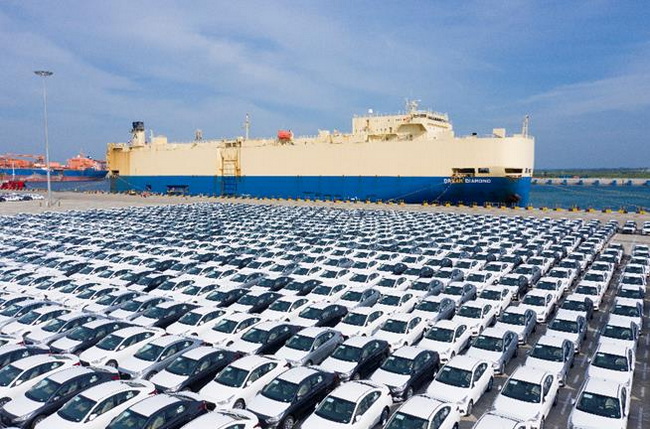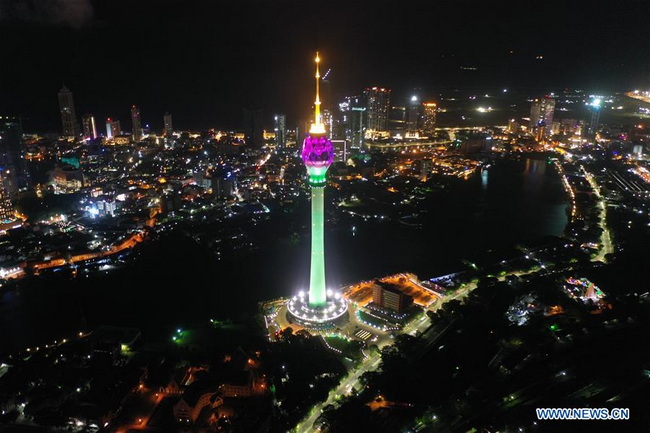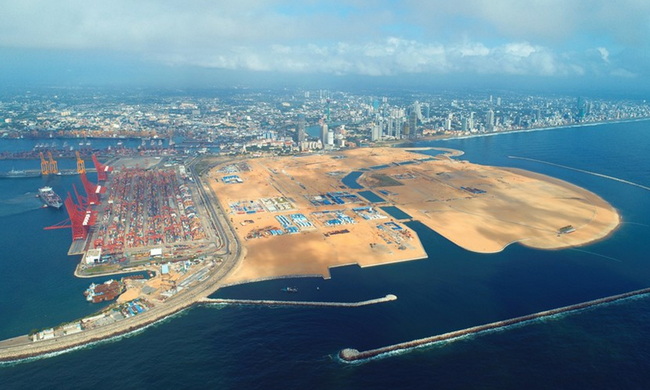"If anybody says Chinese investment is not beneficial, he is wrong. The Belt and Road Initiative (BRI) has already brought benefits to many countries, especially the developing world. People are seeing tangible changes through the BRI,” said Maya Majueran K, a Sri Lankan expert.
The year 2021 marks the 8th anniversary of China’s BRI proposal. Over the past eight years, the BRI has achieved many positive results but also faced challenges. What is the significance of the BRI and what impact will it have on the world? What have been the main challenges faced by the BRI in the past eight years? What new opportunities will the BRI bring to the world in the post-pandemic era?
In a recent interview with the Belt and Road Portal (BRP), Maya Majueran, an expert on the BRI and a co-founder and director of the Belt and Road Initiative Sri Lanka (BRISL), shared his opinions on the development and prospects of the initiative.
BRP: When did you start to study the BRI and why?
Maya Majueran: I had been working in the humanitarian sector for more than 15 years and I work in many different countries, like Lao, Somalia, South Sudan, Iraq, Kenya, Libya, Lebanon and Syria.
Due to my work requirements, I have the opportunity to travel all over the world, and I have noticed the arrival of Chinese investments in many countries and how they have affected these countries’ development. So I tried to spend a lot of time following the BRI and Chinese investments.
Later, my partner and I said, “Why don't we represent Sri Lanka to promote the BRI?” That is the reason why we have created a social media platform and an organization called BRISL.
Also, I registered for university and am currently reading my PhD. My main research domain is the implications of the BRI on Sri Lanka's maritime logistics sector and human resources development in becoming a logistics center in the Indian Ocean.
BRP: Since the BRI was launched, China and Sri Lanka have cooperated in many projects, such as the Colombo-Katunayake Expressway, Southern Expressway and the Moragahakanda reservoir. How do you view the results of cooperation between China and Sri Lanka? What changes have these projects brought to Sri Lanka?
Maya Majueran: In Sri Lanka, there are many projects that are ongoing or have been completed under the framework of the BRI, and large numbers of projects are planned.
Some projects have already benefited Sri Lanka. Take the Colombo-Katunayake Expressway for example. All Sri Lankans use it, and they never complain about it. If anybody says that the BRI does not aid Sri Lanka, he is absolutely lying.
However, some projects cannot bring immediate benefits to common Sri Lankans, or maybe they are not very much needed in this current context. Take the Hambantota Port for example. Western media call it a “Chinese debt trap”. However, having this port was not China's plan. It was a plan of Sri Lanka’s government, which has been studied for many years. Then China came with the investments.
Sri Lanka, a developing country, wants to have an instant benefit. However, the Hambantota Port is not a short-term solution. The country built Hambantota harbor to have maybe two ships in a month, which was not profitable, and still, it needs to pay the loan. After the Hambantota Port was handed over to a Chinese company, it began to bring profits, and Sri Lanka’s government also benefits from it. There are mutual benefits and win-win cooperation.

The Lotus Tower built collaboratively by Sri Lanka and China is another example, which, in my opinion, will be profitable. Tourists can go to the roof of the tower, which will bring tourism revenues just like the Menara Kuala Lumpur (KL Tower). Although the tower is not yet open, it's still expected.

BRP: What do you think of the investment environment in Sri Lanka?
Maya Majueran: Sri Lanka's economy is slowly picking up and the country still needs a lot of infrastructure investment, such as highways and railways investment. The Sri Lankan government has also planned to build more highways and urban rail transit systems.
Besides, Sri Lanka wants to continue the Colombo Port City project. The government wants to make Colombo Port an offshore financial center like Dubai or Singapore for the South Asian market.
When it comes to investment climate, although there are many problems in Sri Lanka, a lot of investments have still come. We expect more Chinese investments in the future, and we also welcome investors from Western countries, which makes Colombo a global city and transshipment hub.
BRP: This year marks the 8th anniversary of the BRI. What do you think of the achievements of the BRI over the past eight years? How do you view the significance of the BRI and its impact on the world?
Maya Majueran: Five years ago, if you asked what the BRI is, almost nobody knows, as the Western media does not promote it. But now, if you talk about it, at least half of the people understand, as the BRI projects have already brought benefits to many countries, especially the developing world.
In Sri Lanka, if you wanted to go to the Hambantota Port before from Colombo, you would need seven hours to drive there. Now, three hours are enough. These are the developments that Sri Lankans are talking about. In Colombo Port, the Colombo international container terminal is managed by a Chinese company that tries to attract mega ships and brings their knowhow to us. Sri Lanka has a very small import-export scale, but it is profiting from the transshipment trade. The Chinese capital, technology, market, enterprises, talents, rich experience and knowhow will have a great chance to be beneficial.
In Africa and in Asia, with regard to infrastructure and agriculture sector, you can find many articles showing how Chinese companies have brought knowhow to local people. For example, in Ethiopia, one of the world’s leading women’s shoe makers Huajian Group (Huajian), which opened a factory in Ethiopia in 2011, sends 100 Ethiopian workers every year to China for a 6-month management training. Providing training and vocational skill development is part of people-to-people bonds, which is one of the BRI’s five Cooperation Priorities.
Since the BRI was initiated, it has reached a very good point and is getting more and more popular. People are seeing the tangible changes through the BRI, especially regarding infrastructure connectivity.
BRP: While achieving positive results, the BRI has also faced many challenges in the past eight years. What do you think were the main challenges? How can they be overcome?
Maya Majueran: When the BRI was initiated, Sri Lanka was one of the first countries to be its partner. However, in the initial stage, many countries did not want to join it and even tried to defame it. The Western media's propaganda against the BRI has brought a negative image to the initiative, which is one of the major challenges of the BRI.
If you Google “BRI in Sri Lanka”, you will see “Chinese debt trap” in Hambantota, which makes many people believe that the BRI is negative. In fact, it is negative propaganda from the Western media. They give their vision, not the BRI’s vision, as Western countries do not want to see a country from the East taking dominance.
The COVID-19 pandemic is also a challenge, as travel restrictions have affected some projects. And many countries, which are economically struggling, become more cautious of foreign investment due to uncertainties in the global markets.
BRP: The world economy has suffered a major blow from COVID-19. But there will also be some new opportunities. In the post-pandemic era, what are the new opportunities and new areas in which China and Sri Lanka can cooperate under the framework of the BRI?
Maya Majueran: In Sri Lanka, the major lesson that we have learned from the pandemic is in e-commerce. Sri-Lanka's e-commerce is very small scale. In Sri Lanka, people usually go to the open markets and supermarket to do shopping. However, since March of 2020, when the pandemic started, a lockdown has come and people began trying to buy online. So I think in the same way, Sri Lanka can get more business or exports to Chinese markets through e-commerce, especially with Chinese e-commerce platforms, which is one of the futures for Sri Lanka's micro, small and medium enterprises. For example, in the last year, Sri Lanka signed an agreement to exhibit Sri Lankan exports on Womai (a Chinese online e-commerce platform), which opens the market for exporters for online trading and promotion in the national promotional section.
The development of tourism is another sector with opportunities. Many Chinese tourists visit Sri Lanka, which is a very good foreign exchange for our country. Due to the COVID-19 lockdown, tourism has fallen. Fortunately, the Chinese government said it will make Sri Lanka a priority country and promote more Chinese to enjoy sight-seeing in Sri Lanka.
Also, the Colombo Port City is another opportunity, and as far as I am concerned, it is the future of Sri Lanka. The Port City will turn into an international financial center. Sri Lanka's government, as well as the Chinese government, are working very actively to promote it. Sri Lanka expects the Port City to provide substantial income through employment creation and new businesses.

BRP: China's 14th Five-Year Plan calls for a high-quality development of the BRI. How do you understand the idea of high-quality development? What are your suggestions for promoting the high-quality development of the BRI?
Maya Majueran: Firstly, environmental factors are one of the concerns. There is some research saying that the BRI investment did not consider environmental protection in the initial stage. However, recent projects, such as Hambantota harbor and the Colombo Port City project, really focus on environmental issues, and make sure that environmental sustainability is still one of the concerns of the BRI.
Secondly, China needs to make sure that each project is affordable and will bring real benefits to the host country. It would be best to employ local people as much as possible and buy raw material as much as possible from the host committee.
Thirdly, information is quite important. If the BRI has enough information, people can go and refer to them and get a better understanding of the initiative. However, at the moment, if you Google and ask for a list of all the BRI projects, you will not find it. For example, what are the projects in Sri Lanka? What are the projects in Kenya or in Ethiopia? Is there a list of all the investors and the total value of the investments? I think this kind of data is lacking. Therefore, more focus should be given to BRI related research organizations and think tanks.
In Sri Lanka, people know that Chinese have come to do business here. But the BRI has not reached everyone. So we are talking about making some videos, podcasts, articles, and interviews to make people understand what is happening. These are the areas where, I think, we can create awareness of the BRI.
Source: Belt and Road Portal







